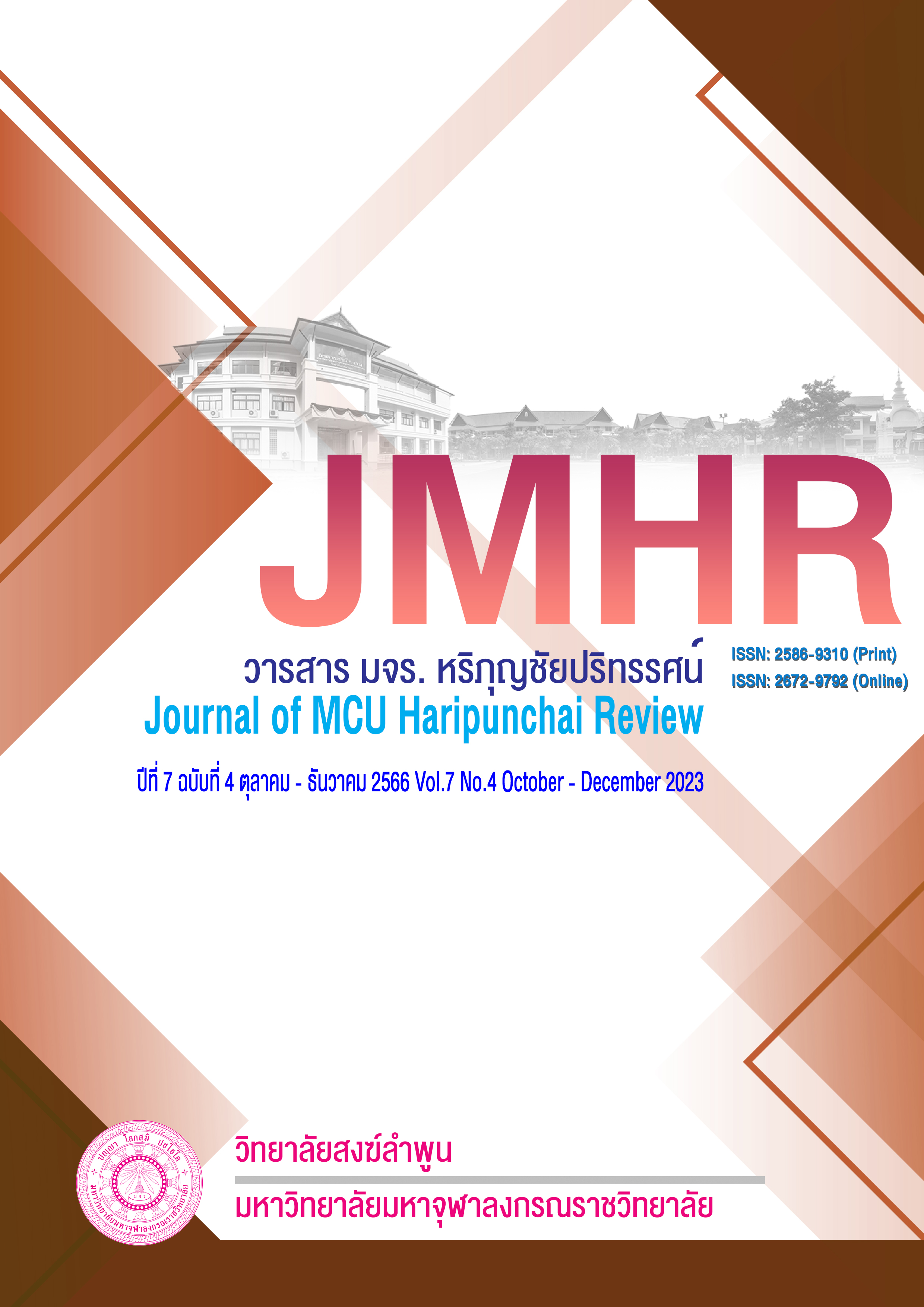Animism in Thai Society
Main Article Content
Abstract
From past to present, the belief in ghosts is a belief that has always been together. However, people in Southeast Asia have adopted Buddhism and Brahmanism but have yet to abandon their original beliefs completely. It caused the development of animism. The people in Southeast Asia combination of spirits, Brahmins and Buddhism together so well that it is part of the way of life of people in Thai society. It is unable to be separated from each other. Some of the new generations see it as a matter of ignorance. Nevertheless, at the same time, some new generations have a new word called Mutelu or Pai Mu. Mu is to attend an animist ritual. And the flesh is still a ritual that is tied to religion. The author therefore noted that there might be changes in the language signs that want to show the superiority of the word to look better than the original call. On the other hand, it is the use of the concept of Moral High Ground to demonstrate superiority in the field of faith.
Article Details

This work is licensed under a Creative Commons Attribution-NonCommercial-NoDerivatives 4.0 International License.
References
กำจร หลุยยะพงศ์. (2556). ภาพยนตร์กับการประกอบสร้างสังคม ผู้คน ประวัติศาสตร์ และชาติ. กรุงเทพฯ: จุฬาลงกรณ์มหาวิทยาลัย
ชาญชัย คงเพียรธรรม. (2556). เรื่องผีในอีสาน: ความเชื่อเเละพิธีกรรมที่เกี่ยวข้องกับผีของกลุ่มชาติพันธ์ ลาว เขมร ส่วย เเละ เวียดนาม ที่อาศัยอยู่บริเวรอีสานใต้ของประเทศไทย. โรงพิมพ์มหาวิทยาลัยอุบลราชธานี.
นิทรรศการออนไลน์ผีตาแฮก. (ม.ป.ป.). Library.stou.ac.th. สืบค้นเมื่อวันที่ 21 กุมภาพันธ์ พ.ศ. 2566, จาก https://library.stou.ac.th/wp-content/odi/online/exhibition-pheetahak/index.html
ปฏิญญา บุญมาเลิศ. (2555). คําเรียกผีและความเชื่อเรื่องผีในภาษาไทยถิ่นเหนือ. Veridian E-Journal SU, 4(1), 587–602.
ผสุดี รอดเจริญ. (2551). พิธีกรรมการฝังศพในสมัยก่อนประวัติศาสตร์ : ความเชื่อและสถานภาพทางสังคม. วารสารดำรงวิชาการ, 7(1), 146–165.
พจนานุกรมไทยฉบับราชบัณฑิตยสถาน พ.ศ. 2554. (2556). พิมพ์ครั้งที่ 2. กรุงเทพฯ: ราชบัณฑิตยสถาน.
วริศา จันทร์ขำ และ ขวัญฟ้า ศรีประพันธ์. (2560). การเปรียบเทียบความหมายผีในรายการโทรทัศน์ "คนอวดผี"กับความเชื่อเรื่องผีในสังคมไทย. วารสารการสื่อสารมวลชน, 5(2), 46–69.
สามารถ ใจเตี้ย และ วรางคณา สินธุยา. (2562). ผีล้านนาในมิติการสร้างเสริมสุขภาพชุมชน. วารสารวิจัยราชภัฏพระนคร สาขาวิทยาศาสตร์และเทคโนโลยี, 14(2), 162–168.
สุชาติบุษย์ ชญานนท์. (2559). คติความเชื่อเรื่องผีในยุควิทยาการสมัยใหม่ (IT). วารสารวนัมฎองแหรกพุทธศาสตรปริทรรศน์, 3(1), 42–54.
Wu Shengyang, & Li Bingbing. (2561). ความคิดแบบปิตาธิปไตยกับการพัฒนาภาพลักษณ์ของผีในวรรณกรรมไทย : กรณีศึกษาจากเรื่องแม่. วารสารศิลปกรรมบูรพา, 21(1).
Aldhouse-Green, M. J. (2015). Celtic myths: a guide to the ancient gods and leg-ends. Thames & Hudson.
Collison-Morley, L. (2019). Greek and Roman Ghost Stories. Good Press.
Doughty, C. (2017). From Here to Eternity: Traveling the World to Find the Good Death. W. W. Norton & Company.
Humphrey C & Thomas, N. (1999). Shamanism, history, and the state. Ann Arbor Univ. Of Michigan Press.
Quadri A. (2023). AN ANALYSIS OF THE SOTERIOLOGICAL DOCTRINES OF WORLD. CIFIA GLOBAL JOURNAL, 6.
Stanley Park Totem Poles in Vancouver, BC, Canada | StanleyParkVan.com. (n.d.). Stanleyparkvan.com. https://stanleyparkvan.com/stanley-park-van-attractions-totem-poles.html


